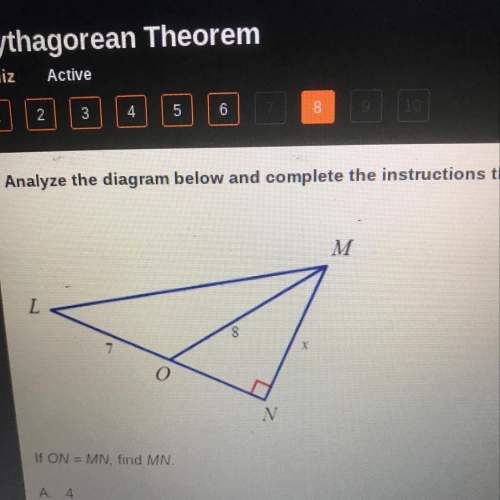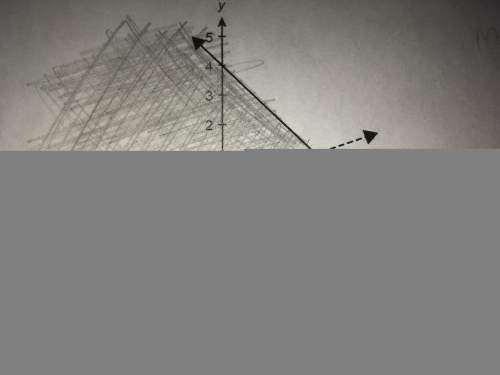If on = mn, find mn.
a 4
b. 5
c. 4 square root 2
d. 4 square root 30
...

Mathematics, 17.07.2019 22:20 princessvaeh2625
If on = mn, find mn.
a 4
b. 5
c. 4 square root 2
d. 4 square root 30


Answers: 1


Another question on Mathematics

Mathematics, 21.06.2019 22:30
Question 3(multiple choice worth 1 points) use the arc length formula and the given information to find r. s = 16 cm, θ = 48°; r = ? sixty divided by pi cm thirty divided by pi cm one third cm one hundred twenty divided by pi cm
Answers: 1

Mathematics, 22.06.2019 03:00
:)i need to know on which ones are corresponding, alternate interior, alternate exterior, or none of these.
Answers: 1

Mathematics, 22.06.2019 03:30
Jessa bought a yoyo from a company that claims that, with each retraction, the string rolls up by 60% of the original length. she sets up a tape measure and throws the yoyo 3 times. her data are charted below. throw length of string (feet) 1 3 2 1.8 3 1.08 jessa wants to find the sum of the length of string after 10 throws. what is the sum of the lengths, rounded to the nearest hundredth?
Answers: 3

Mathematics, 22.06.2019 04:20
When booking personal travel by air, one is always interested in actually arriving at one’s final destination even if that arrival is a bit late. the key variables we can typically try to control are the number of flight connections we have to make in route, and the amount of layover time we allow in those airports whenever we must make a connection. the key variables we have less control over are whether any particular flight will arrive at its destination late and, if late, how many minutes late it will be. for this assignment, the following necessarily-simplified assumptions describe our system of interest: the number of connections in route is a random variable with a poisson distribution, with an expected value of 1. the number of minutes of layover time allowed for each connection is based on a random variable with a poisson distribution (expected value 2) such that the allowed layover time is 15*(x+1). the probability that any particular flight segment will arrive late is a binomial distribution, with the probability of being late of 50%. if a flight arrives late, the number of minutes it is late is based on a random variable with an exponential distribution (lamda = .45) such that the minutes late (always rounded up to 10-minute values) is 10*(x+1). what is the probability of arriving at one’s final destination without having missed a connection? use excel.
Answers: 3
You know the right answer?
Questions

Mathematics, 19.03.2020 19:19

Mathematics, 19.03.2020 19:19


Mathematics, 19.03.2020 19:20


History, 19.03.2020 19:20




History, 19.03.2020 19:20

Chemistry, 19.03.2020 19:20

Computers and Technology, 19.03.2020 19:20





Mathematics, 19.03.2020 19:21







